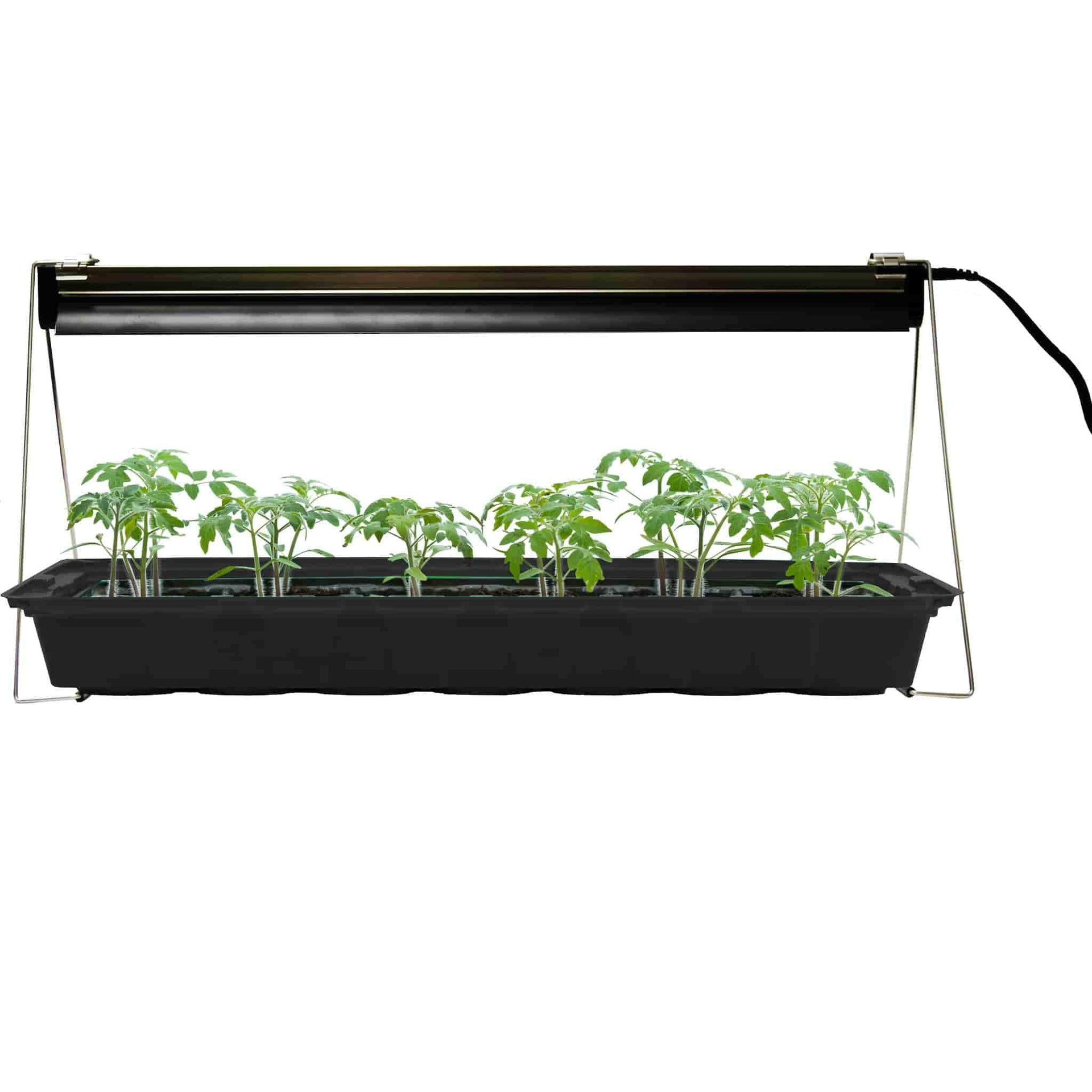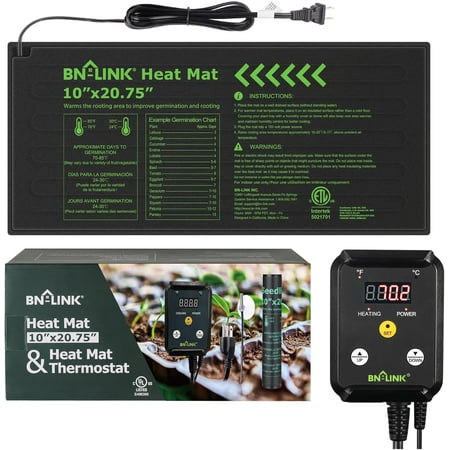7 flowers to sow in January – plant seeds indoors this month for enchanting summer blooms
Yes, you can sow summer flowers this month indoors if you give them the heat and light they need
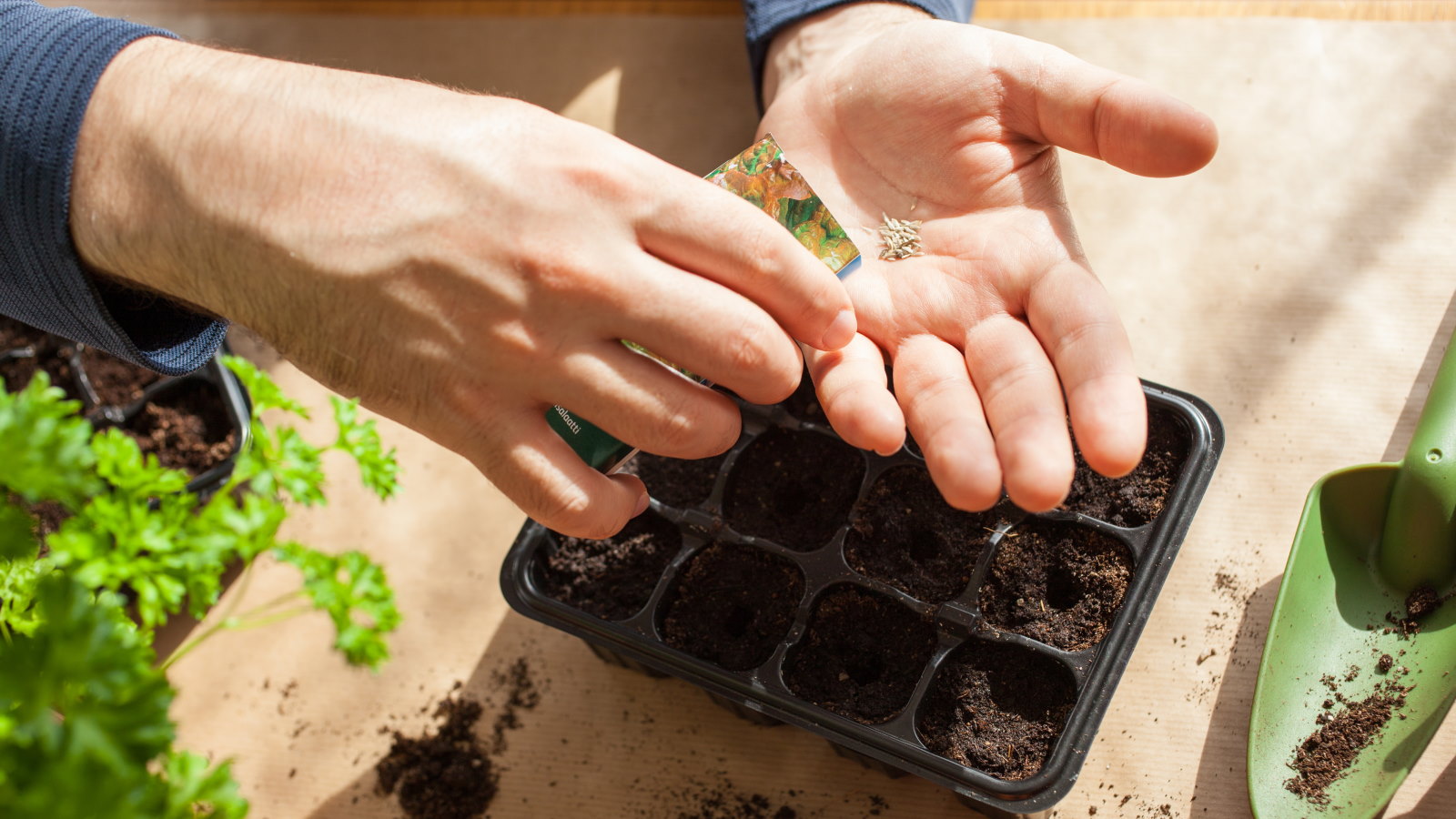

The new gardening year can feel like a slow starter, as the weather is cold and little color is outside. There may be few blooms now, but you can dream and plan for summer color and texture. There are flowers to sow in January that can reward you with bountiful blooms later in the season.
A lovely range of colorful summer flowers can be sowed indoors this month for earlier blooms and a long flowering season. Sowing indoors in January will not be for everyone, as you need space and propagation equipment such as heat mats and grow lights. You can wait until the natural light and temperatures increase to sow - which is understandable.
But for those who have that gardening itch to scratch this month and want to get ahead, there is a great selection of flowers, herbs, and vegetables to plant in January. Here we focus on seven fantastic flowers to sow in January.
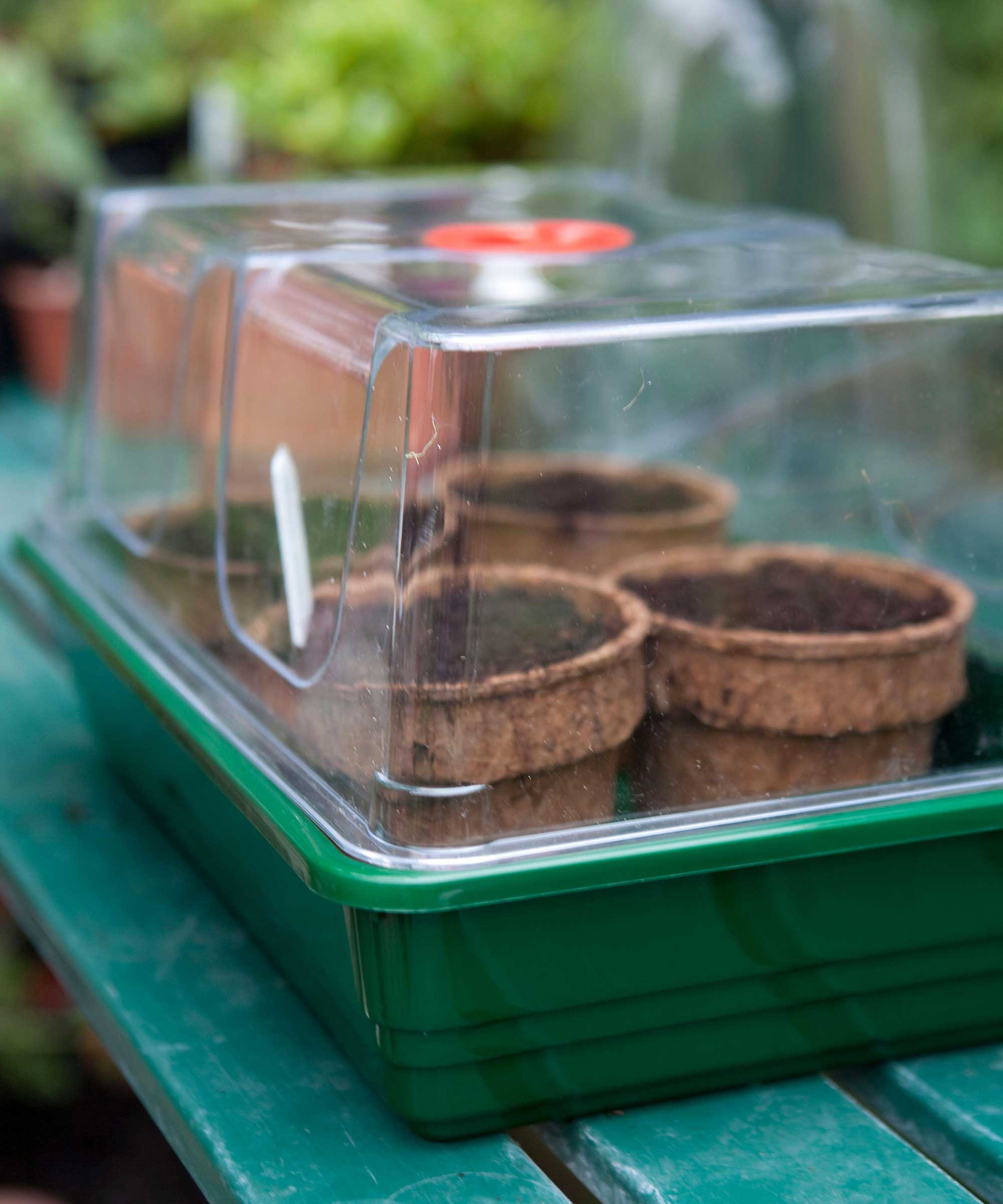
7 flowers to sow in January - and the kit you will need
The heat and light levels are low in January, so sowing seeds indoors often needs extra heat and light to supplement the natural levels.
This includes propagation equipment such as heated propagators, heat mats, and LED grow lights. What you need may vary depending on your climate and set-up, but even seeds on a warm windowsill can benefit from extra heat and light this month.
Heated propagators or heat mats will provide essential warmth from below and increase your chances of germination, and grow lights help prevent leggy seedlings due to a lack of light. You can get propagators with grow lights and heat elements included as part of an all-round propagation station.
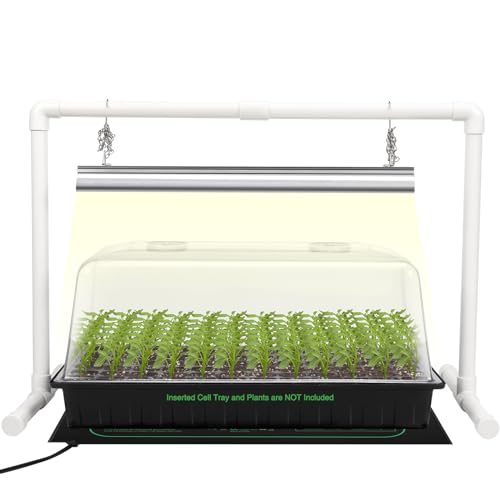
A complete kit for starting seeds, including a humidity dome, seedling heat mat warmer, LED grow lights and light stand.
1. Begonia
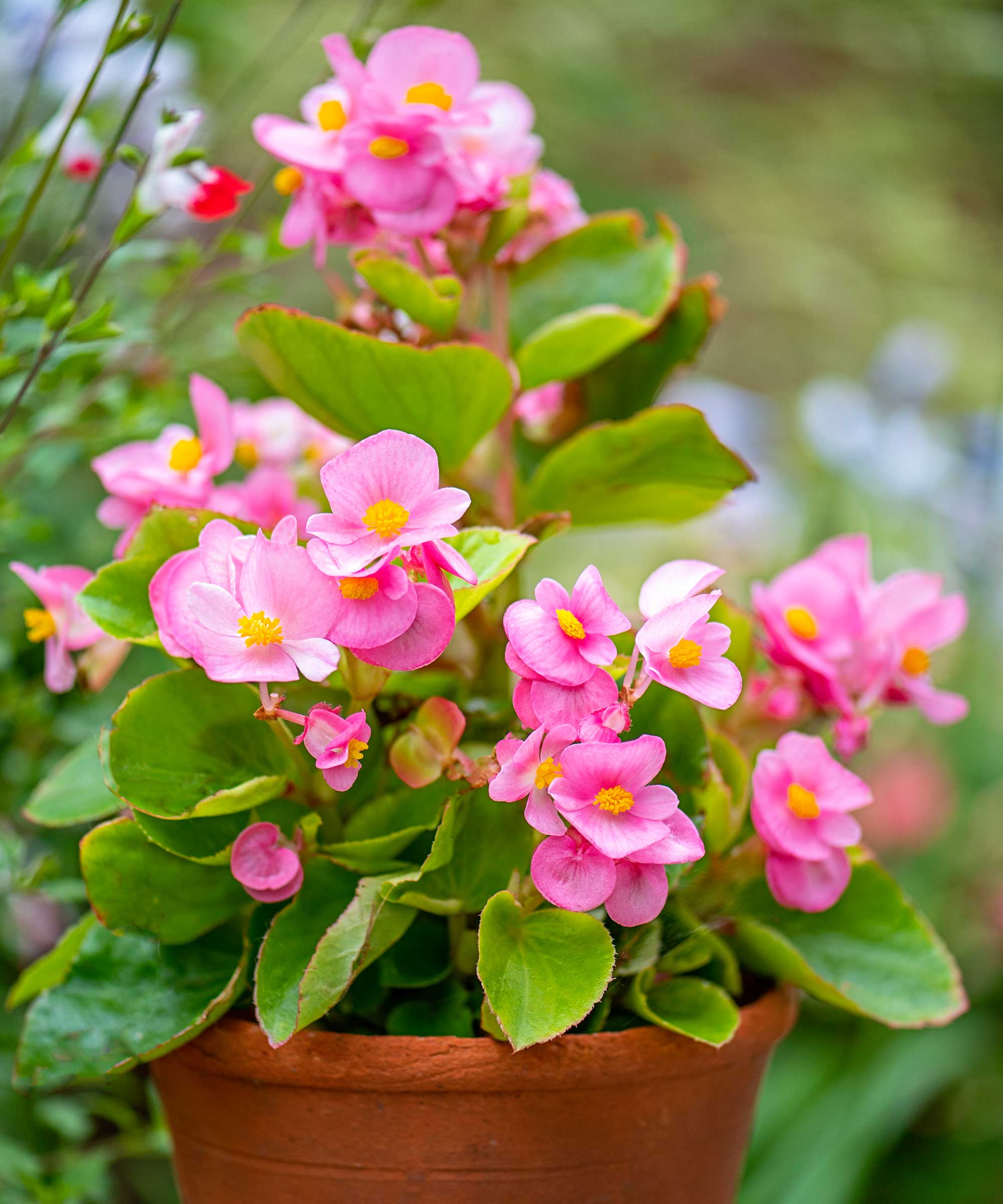
If you want to grow begonias, there are many species to choose between. Plants come in various colors and begonias are popular choices for filling flower beds, containers, and hanging baskets with a riot of color during the summer. You can propagate begonias from cuttings and also buy plug plants or tubers. Alternatively, a more budget-friendly choice - one that does require patience - is to grow begonias from seed.
Begonia seeds can be sown from mid-January onwards. The seeds are small and want to be sown on the surface of compost - do not cover them. Place them in a propagator at a temperature of 70-75°F and keep them moist. Germination can take up to five weeks and seedlings can be transplanted into their final position once the risk of frosts has passed.
Discover the range of begonia seeds at True Leaf Market
2. Geranium
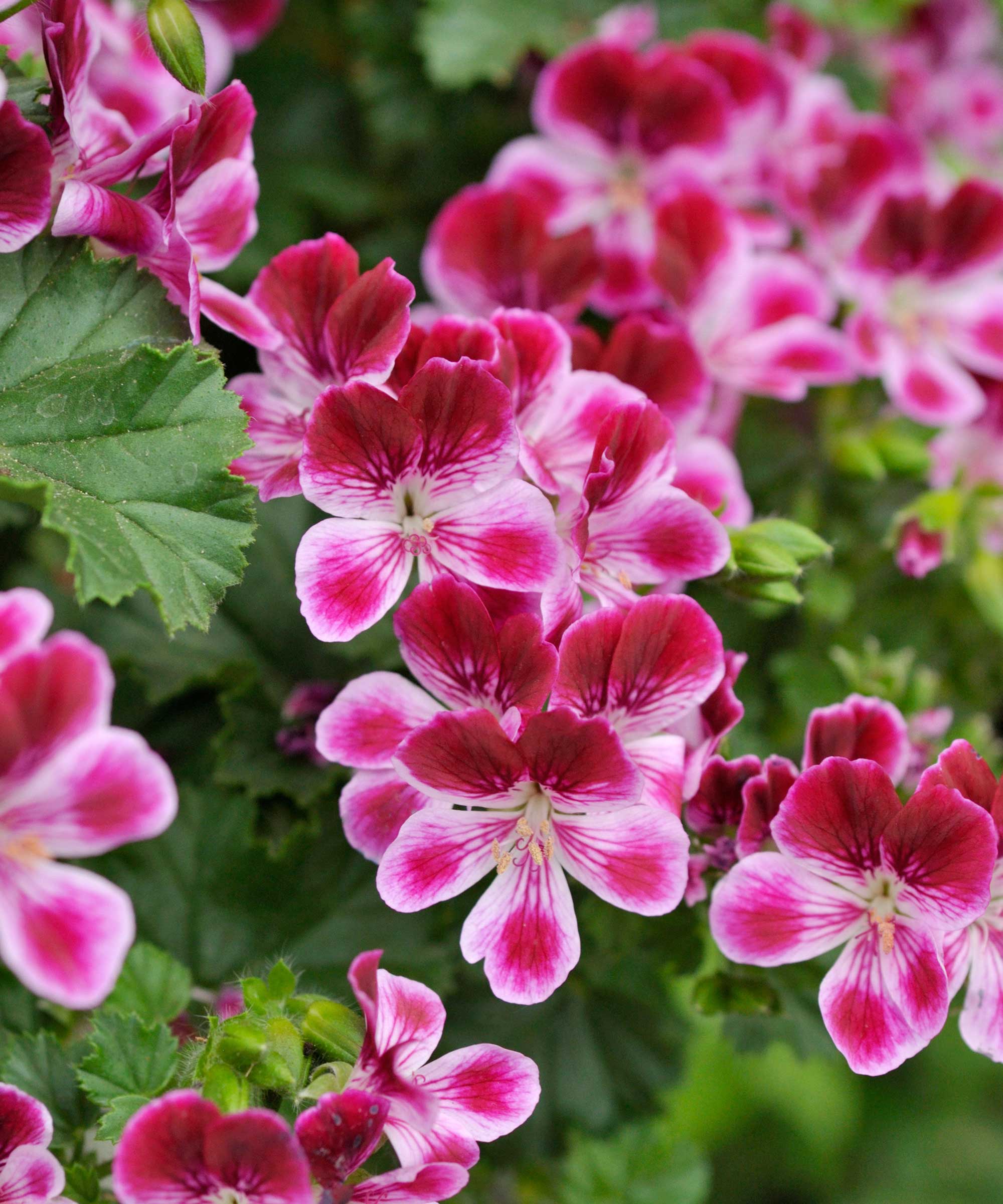
Geraniums, also commonly known as pelargoniums, are popular bedding plants. They are another backyard staple often started via plant cuttings that can also be grown from seed sown early in the gardening year.
Sow geranium seeds indoors into multi-cell trays filled with seed compost. Sow seeds onto the soil surface and cover them with a thin layer of compost or vermiculite. The seeds will germinate best at temperatures of 70-75°F. Keep the soil moist and pot up seedlings into individual pots once they have their first set of true leaves.
Geraniums can go outdoors into the yard after a period of hardening off and when the frosts have ended. A January sowing of geraniums will reward you with early blooms from May. If you deadhead geraniums you can get a glorious, continuing display throughout summer.
Discover the range of geranium seeds available at Burpee
3. Icelandic poppies
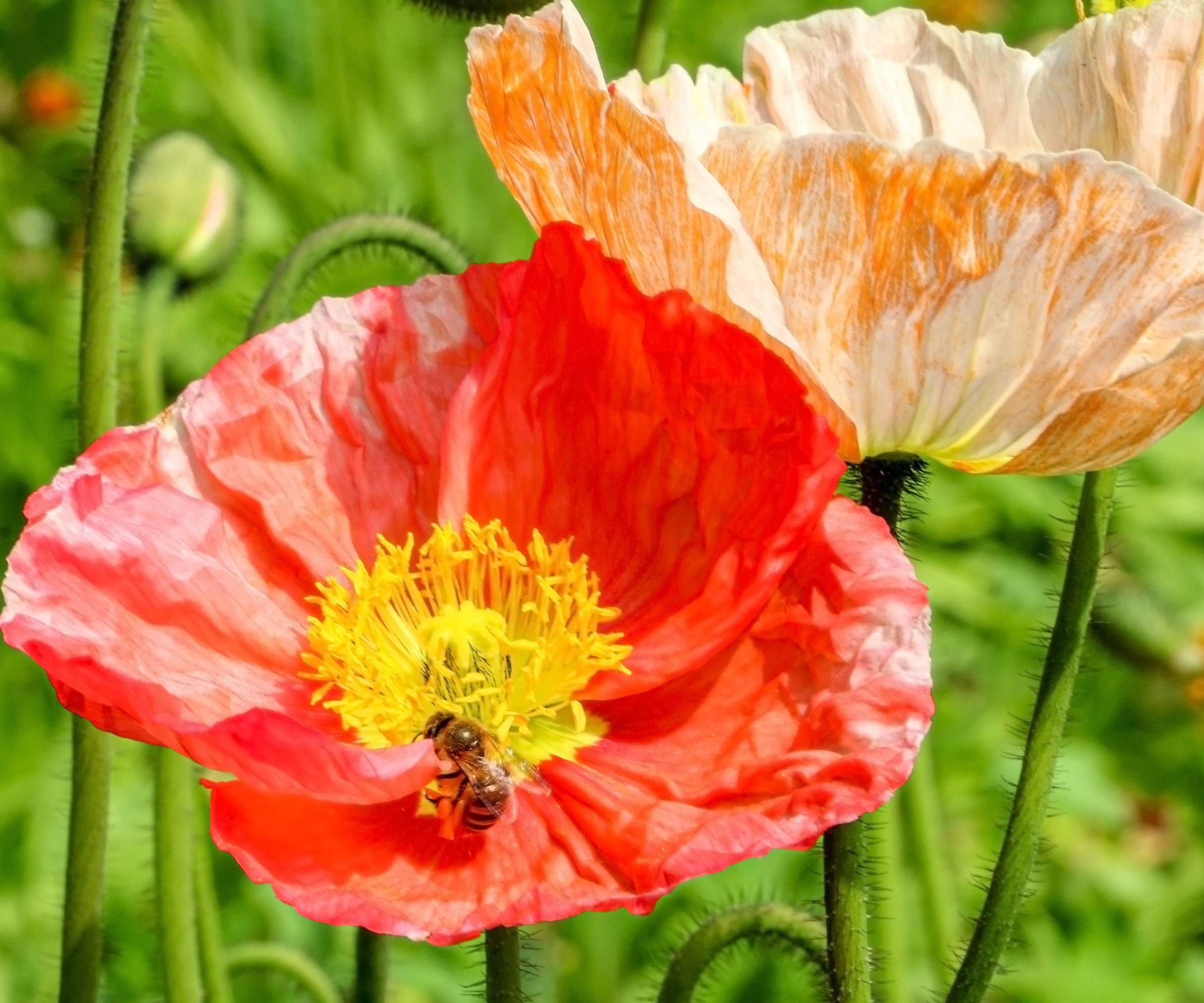
Icelandic poppies, sometimes called Arctic poppies, are a specific type of poppy with hairy leaves and a single bowl-shaped flower, made up of four petals, that can be red, yellow, orange, or white. The plants are hardy in US hardiness zones 2-7 and the delicate flowers bloom profusely in summer.
Icelandic poppies can be sown in January, but these are one plant that does not need to be propagated indoors. If you want to grow poppies, you can directly sow seeds outdoors once the soil is workable or start the plants in a cold frame this month. For the latter method, sow seeds onto the surface of individual pots filled with seed compost. Place the pots into a cold frame or unheated greenhouse at a temperature of 55°F and transfer them into the garden come spring.
Using biodegradable pots for this method of growing Icelandic poppies can prevent root disturbance when transplanting young plants. As the plants are delicate, the less disturbance the better.
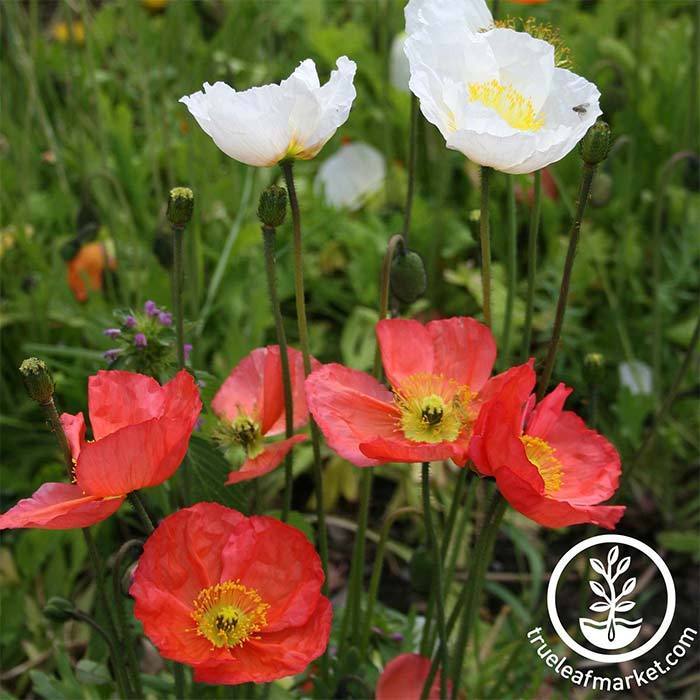
A mix of Icelandic poppy seeds which will grow spectacular 2-4" delicate papier-mâché blooms in a mix of red, peach, white, pink, canary, and fuchsia.
4. Lobelia
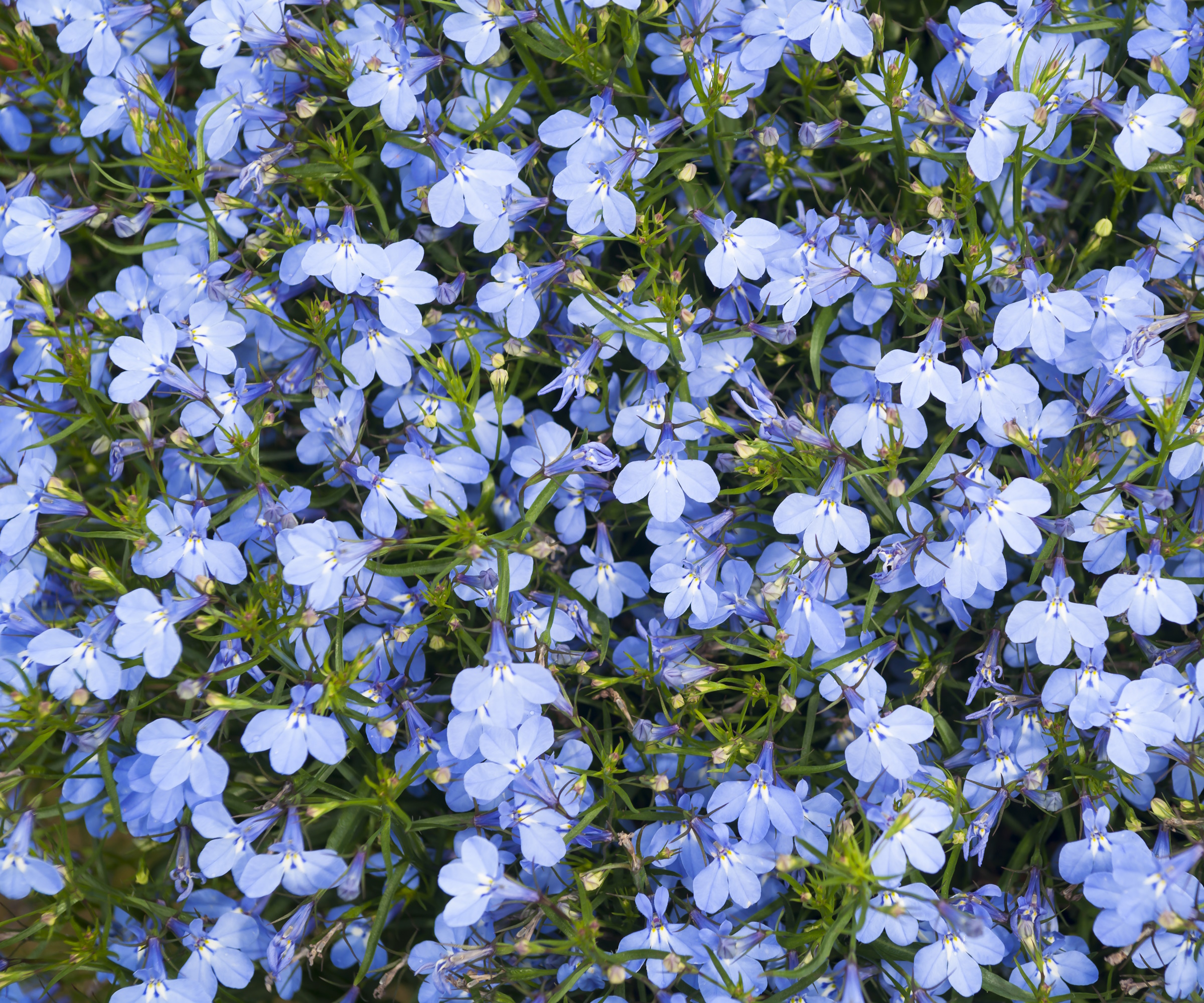
Lobelia are half-hardy annual plants that come in many shades. They are popular for summer displays as plants are covered in tiny blooms throughout summer and up until the frosts arrive. They are also highly versatile plants suitable for flower beds, container gardens, or hanging baskets.
Lobelia seeds can be sown indoors from mid-January onwards for plants that can dazzle come summer. The seeds themselves are tiny and must be handled carefully. Sow them thinly into trays or pots of compost. Firm the small seeds down, but do not cover them as they want light to germinate. Keep them at temperatures of 65-75°F and lobelia seeds should germinate within 2-3 weeks.
Seedlings can be potted up into individual pots when they are large enough to handle and be planted out after the risk of frost has passed.
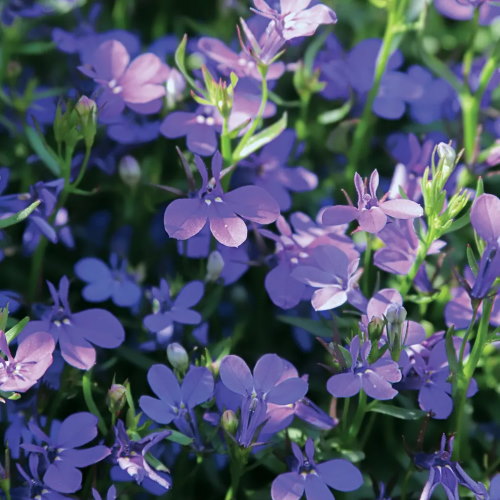
A pack of 500 seeds to grow dainty, cobalt blue flowers of the 'Crystal Palace Blue' lobelia. The flowers appear over compact plants until the first frosts.
5. Petunias
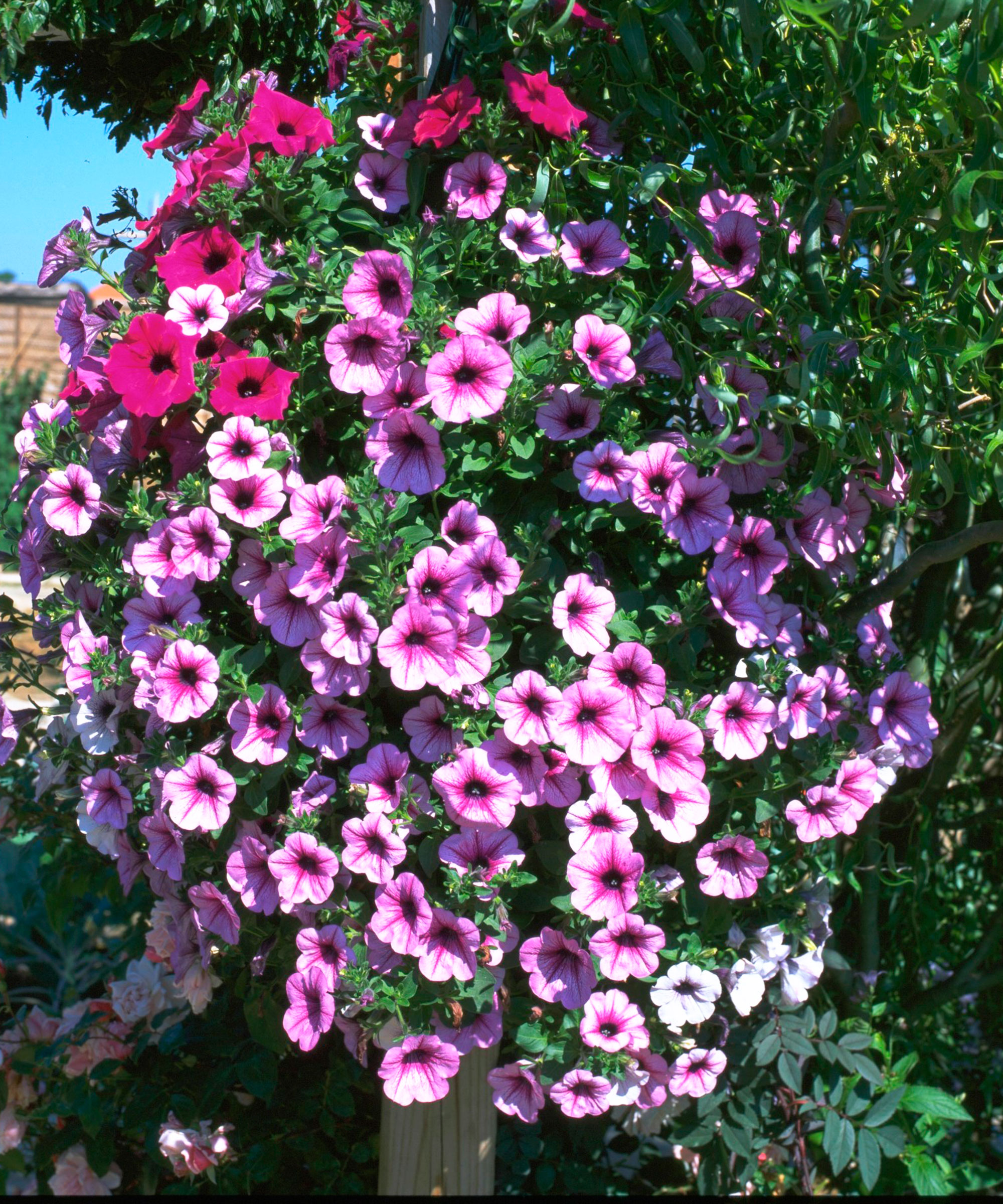
Petunias are another common summer plant that produces a mass of colorful blooms to brighten up any backyard space. Suitable for many different garden ideas, including beds, containers, or hanging baskets, petunias are often planted in large numbers - making it cost-effective to start plants from seed.
Petunias can be sown in late January in warmer climates, where the temperatures start rising earlier and young plants can be put outside from mid-March onwards. Petunia seeds are tiny and want to be gently sprinkled onto the top of the compost and germinated in a warm and bright position where they can enjoy temperatures of 65-75°F.
Once the flowers appear in summer, remember to deadhead petunias regularly to keep the petunias blooming right up until the frosts arrive in the fall.
Discover the range of petunia flower seeds at True Leaf Market
6. Snapdragons
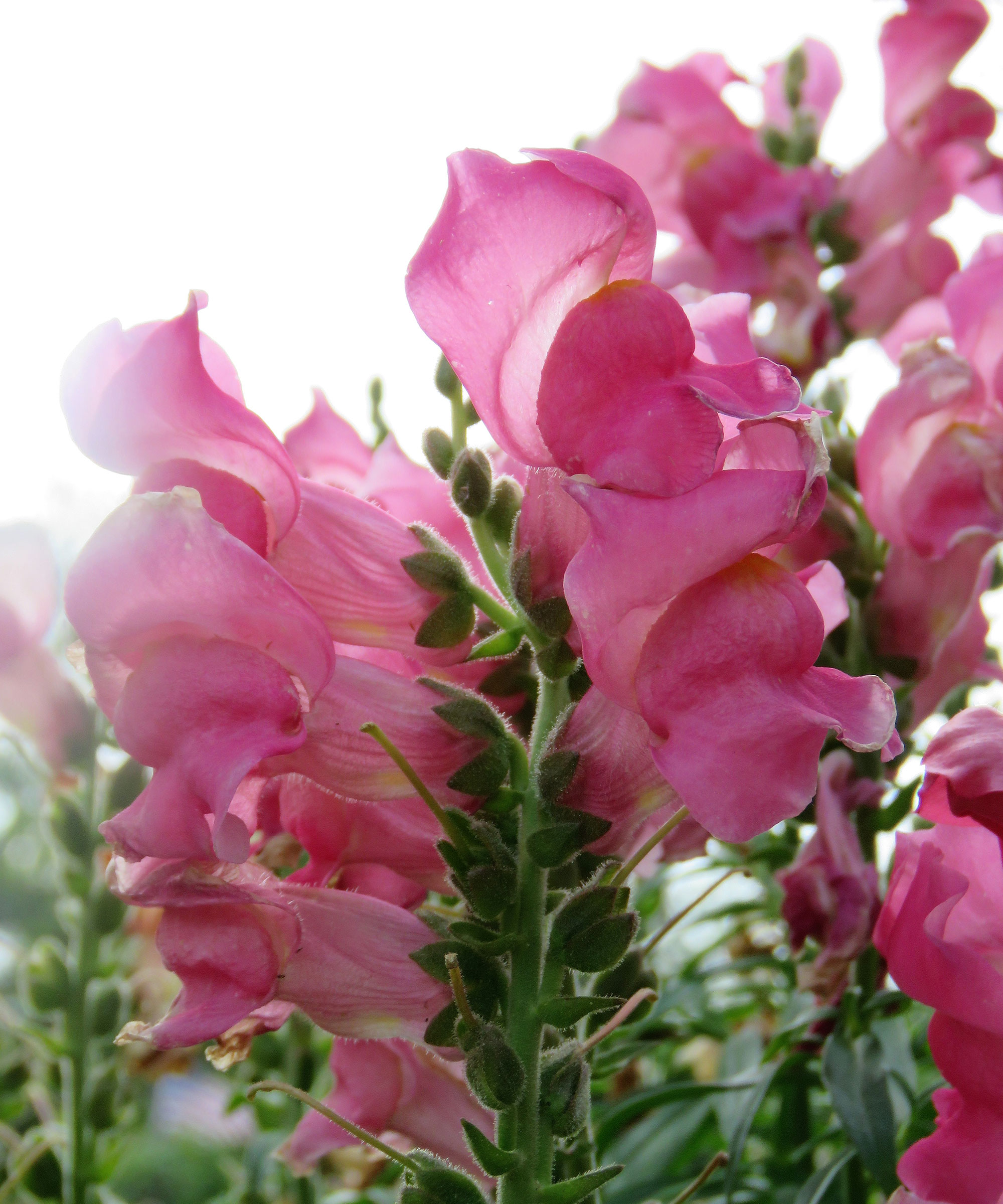
Sowing snapdragons late in January can give you young plants of this cottage garden favorite to plant and fill your yard with glorious spikes of fragrant, colorful flowers. Sow seeds indoors around 6-10 weeks before your last frost to start growing snapdragons for early-season blooms.
Sow seeds on the surface of seed compost and place them in a propagator at temperatures of 68-75°F. Keep the soil moist, but not waterlogged, and germination should ideally take 2-3 weeks. Seedlings need transplanting into individual pots to grow before being planted in their final growing position.
Prune snapdragons through the season to get more flowers, including pinching back the growing tips when young plants reach six inches tall and regularly deadheading to encourage continuous blooming.
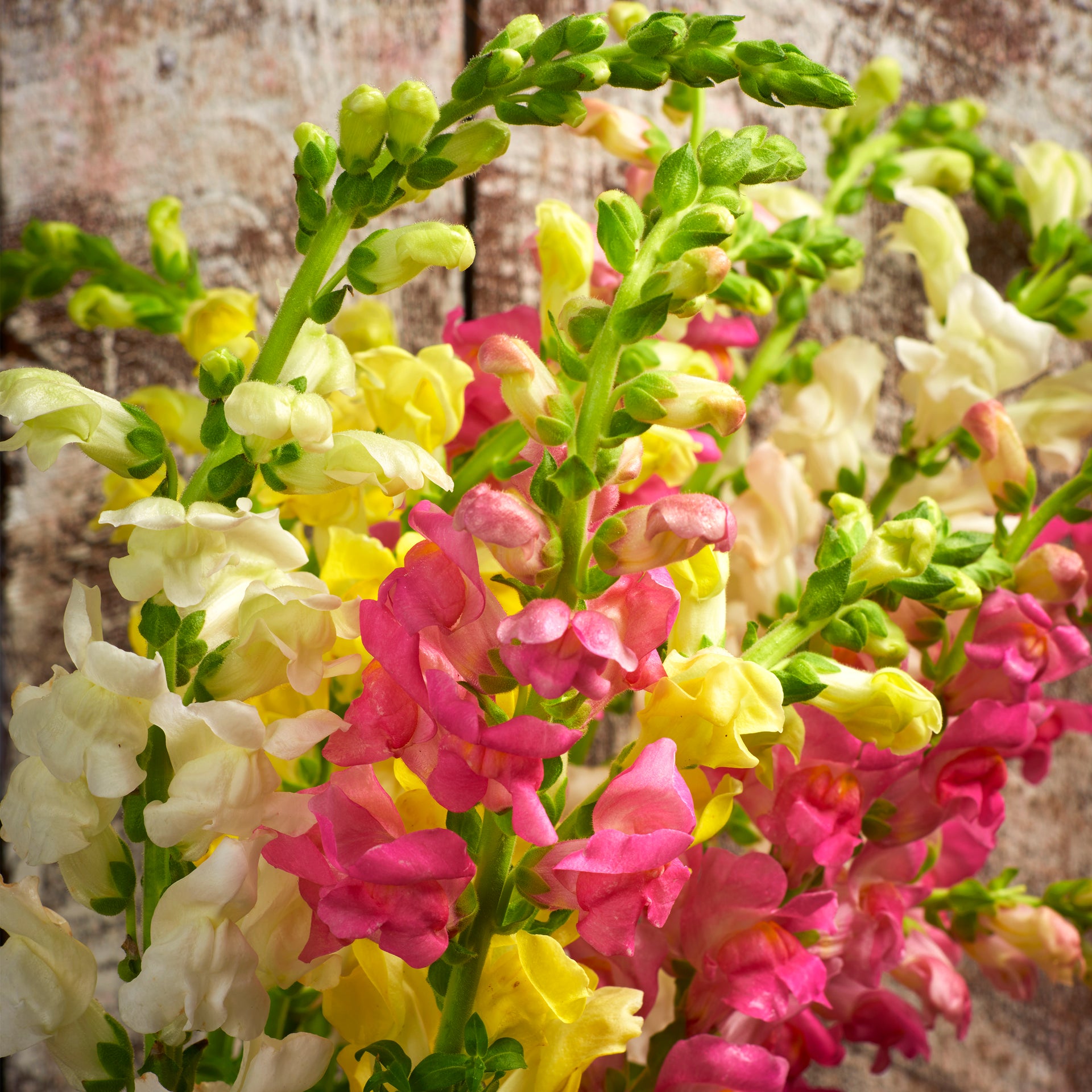
A packet of seeds to grow 'First Ladies Mixed Colors' snapdragons, with blooms in intense colors including white, yellow, purple, crimson, bronze, and pink.
7. Sweet Peas
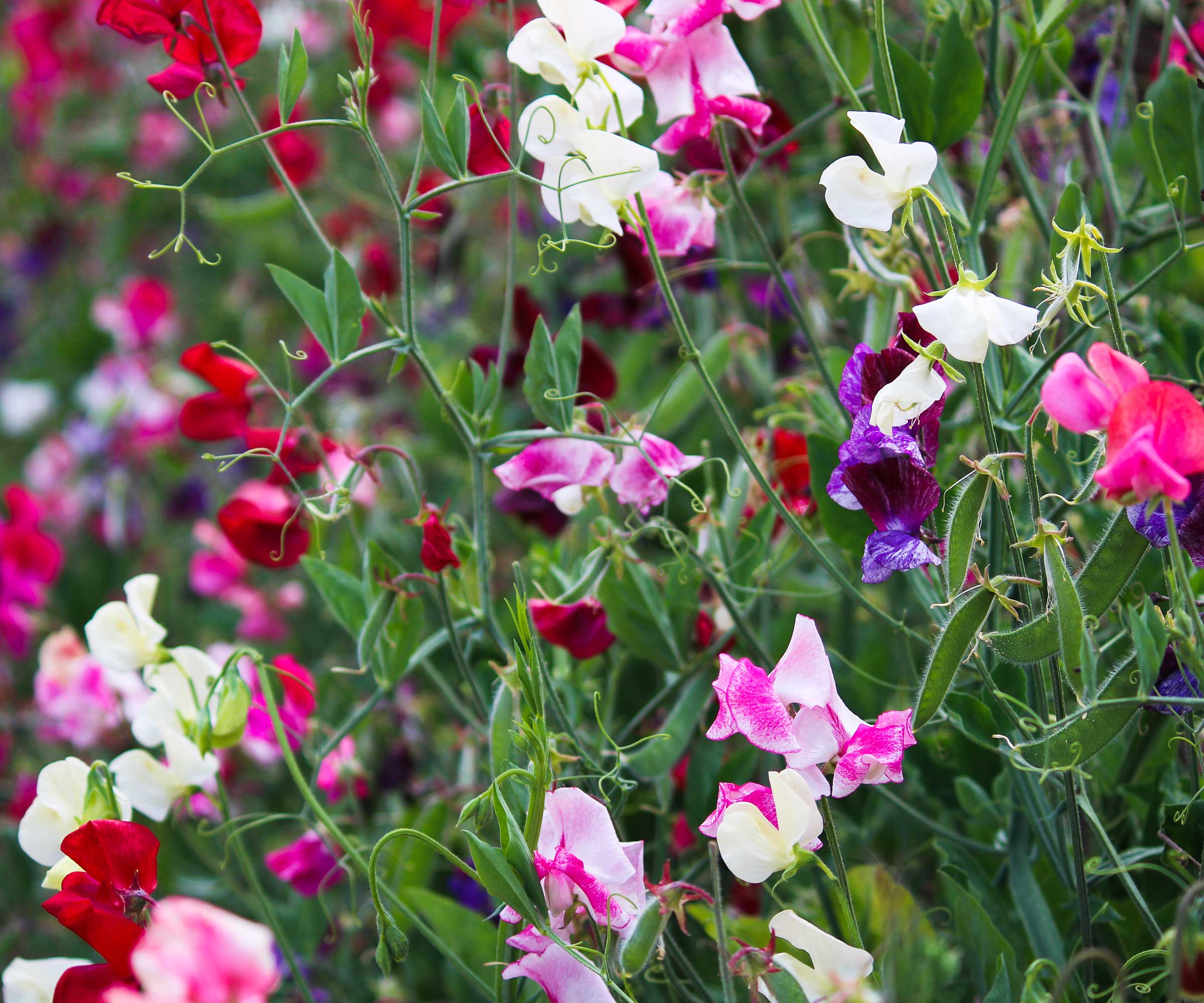
Everyone loves growing sweet peas, they are one of the easiest flowers to grow from seed and plants are adored for their stunning and scented flowers that come in many colors. There are many varieties of sweet peas to grow and seeds can be sown between late fall and early spring.
Sow sweet pea seeds into deep pots or root trainers, as the plants develop vigorous root systems quickly and deeper containers mean less root disturbance when planting sweet peas.
Plant seeds an inch deep into seed compost and place them in a heated propagator or on a warm windowsill. Sweet peas do not need lots of warmth for germination and will grow at temperatures of around 60°F.
Pinch out the young stems when they have three pairs of leaves to get bushier plants before planting the sweet peas into their final growing position.
See the range of sweet pea flower seeds at True Leaf Market
FAQs
What bulbs can I plant in January?
January is late to plant most spring bulbs, however, tulips may still produce a display this year if planted early in January. It is very late to plant daffodils in January, but if you still have bulbs that have not been planted, it is better to get them in the ground. They may not bloom this year but can establish roots to appear again and flower next year.
It is not just flowers that can be planted indoors this month, there is also a good selection of vegetables to plant in January to provide homegrown crops through spring and summer. The likes of cabbage, cauliflower, fava beans, eggplant, onions, and more can be sowed in the early weeks of the gardening year on a warm windowsill, or with the assistance of heated propagators or grow lights.
Sign up to the Homes & Gardens newsletter
Design expertise in your inbox – from inspiring decorating ideas and beautiful celebrity homes to practical gardening advice and shopping round-ups.

Drew’s passion for gardening started with growing vegetables and salad in raised beds in a small urban terrace garden. He has worked as a professional gardener in historic gardens and specialises in growing vegetables, fruit, herbs, and cut flowers as a kitchen gardener. That passion for growing extends to being an allotmenteer, garden blogger, and producing how-to gardening guides for websites. Drew was shortlisted for the New Talent of the Year award at the 2023 Garden Media Guild Awards.
-
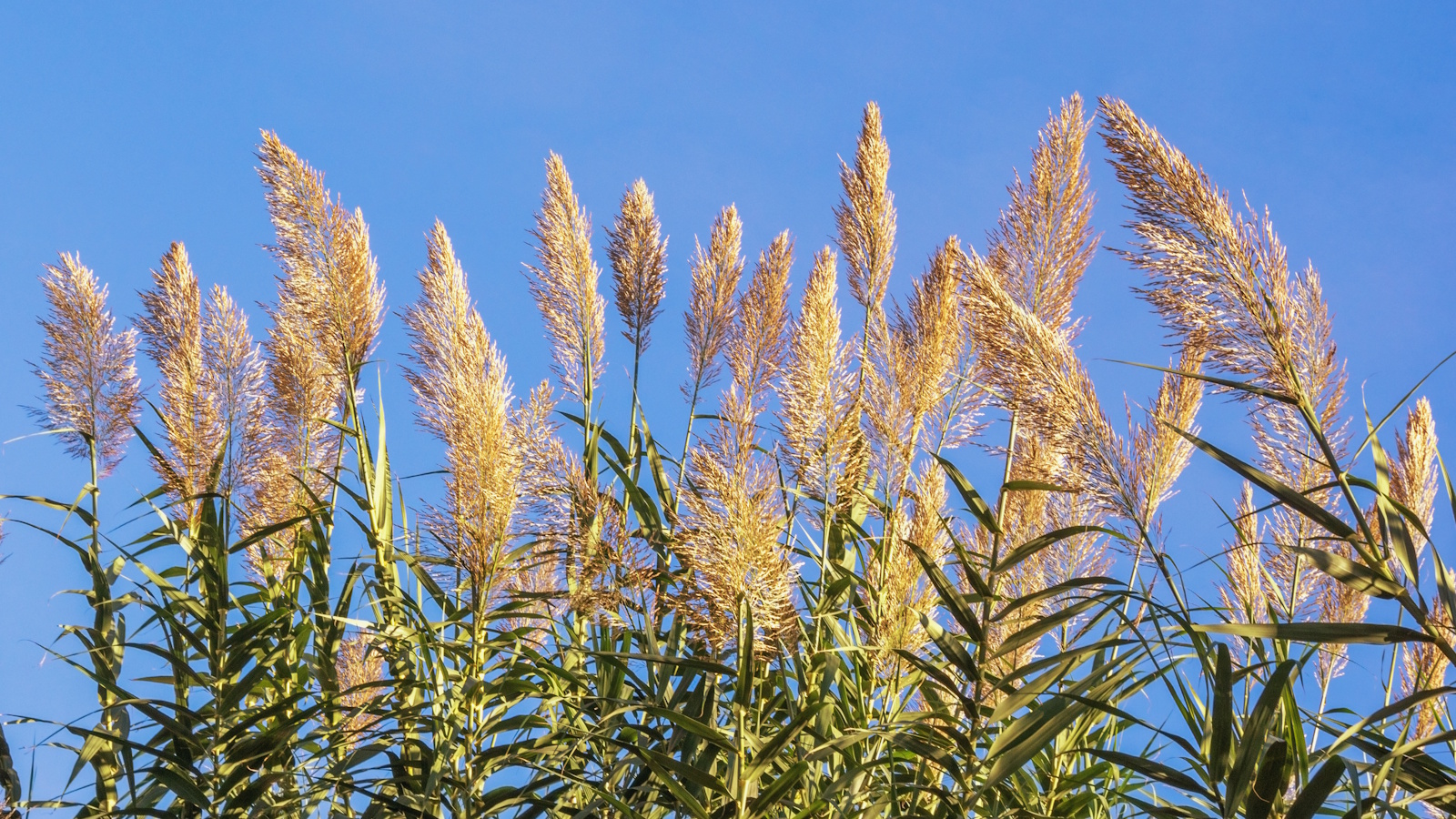 5 plants that are illegal to grow in California – how to control these invasive species in your yard, plus the native alternatives to use instead
5 plants that are illegal to grow in California – how to control these invasive species in your yard, plus the native alternatives to use insteadThese troublesome, invasive species will outcompete native plants and you could face a fine for growing them
By Thomas Rutter
-
 An architectural birdhouse is the most charming backyard trend I've ever seen – and there are lots on sale for Way Day
An architectural birdhouse is the most charming backyard trend I've ever seen – and there are lots on sale for Way DayWill you treat your garden birds to a Victorian manor, or perhaps a Cape Cod cottage?
By Tenielle Jordison
-
 7 of the fastest growing flowers to plant in spring for early summer blooms
7 of the fastest growing flowers to plant in spring for early summer bloomsSow these seeds now and be greeted with early summer color and repeat blooms in your yard
By Jacky Parker
-
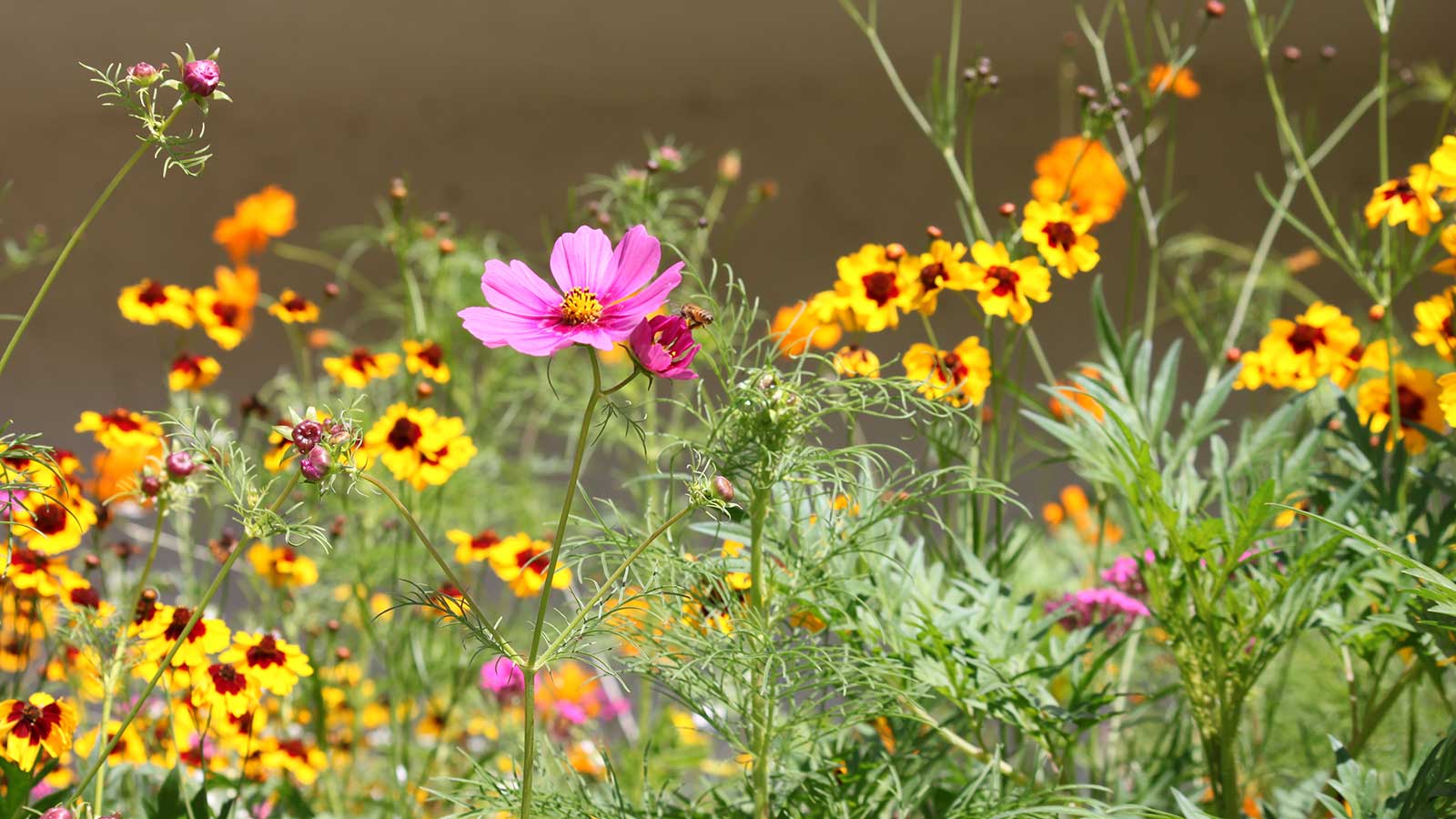 How to design a mini meadow in pots – and welcome birds, bees and butterflies to your urban wildlife garden this summer
How to design a mini meadow in pots – and welcome birds, bees and butterflies to your urban wildlife garden this summerExperts share advice on species recommendations, soil, and types of containers to use for meadow planting
By Holly Crossley
-
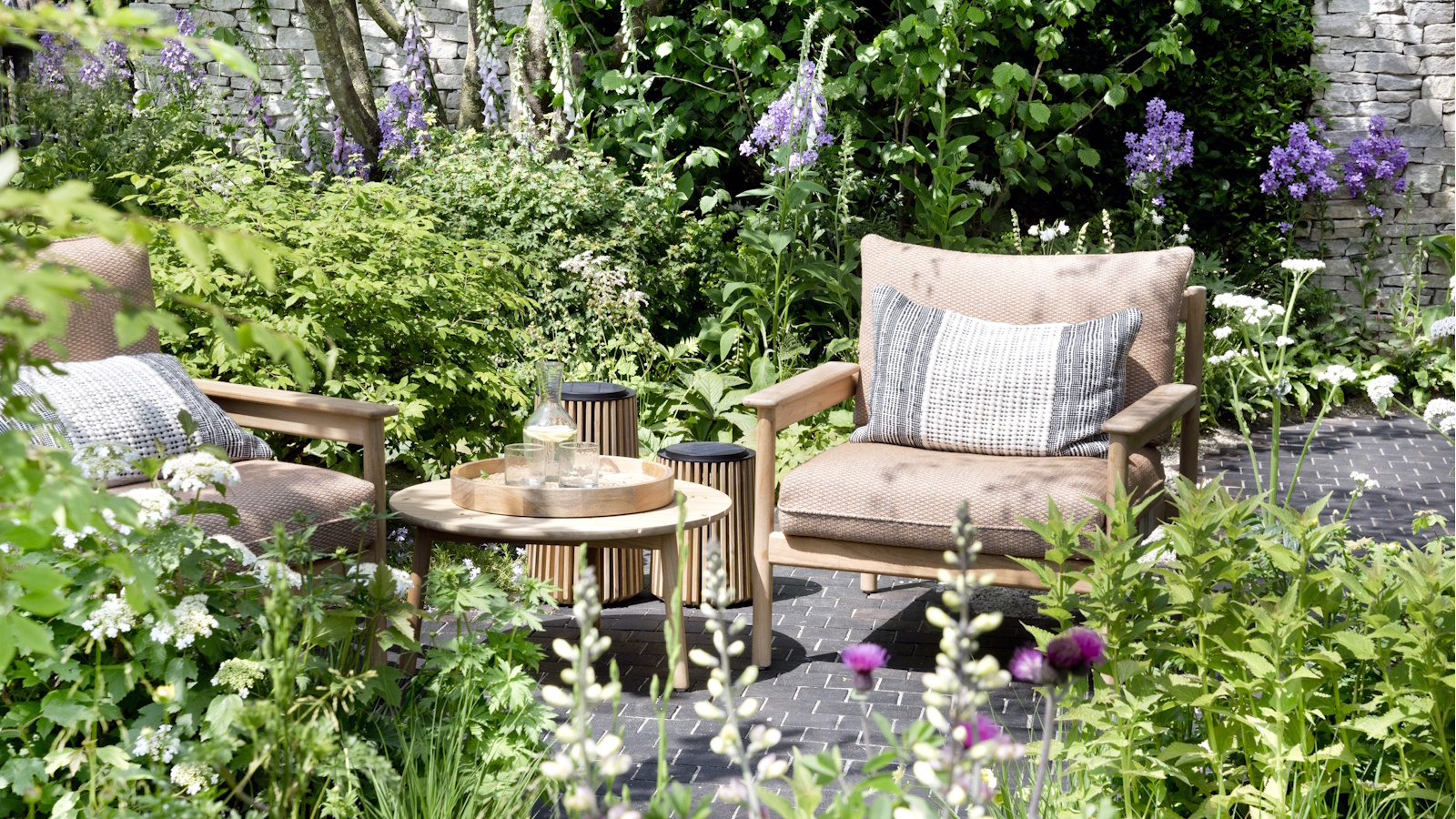 This $20 pop-up greenhouse from ALDI is perfect for small yards – it will turbocharge your tomato harvests this summer
This $20 pop-up greenhouse from ALDI is perfect for small yards – it will turbocharge your tomato harvests this summerEasy to use and compact to store, pop-up greenhouses are ideal for patio or balcony gardeners
By Thomas Rutter
-
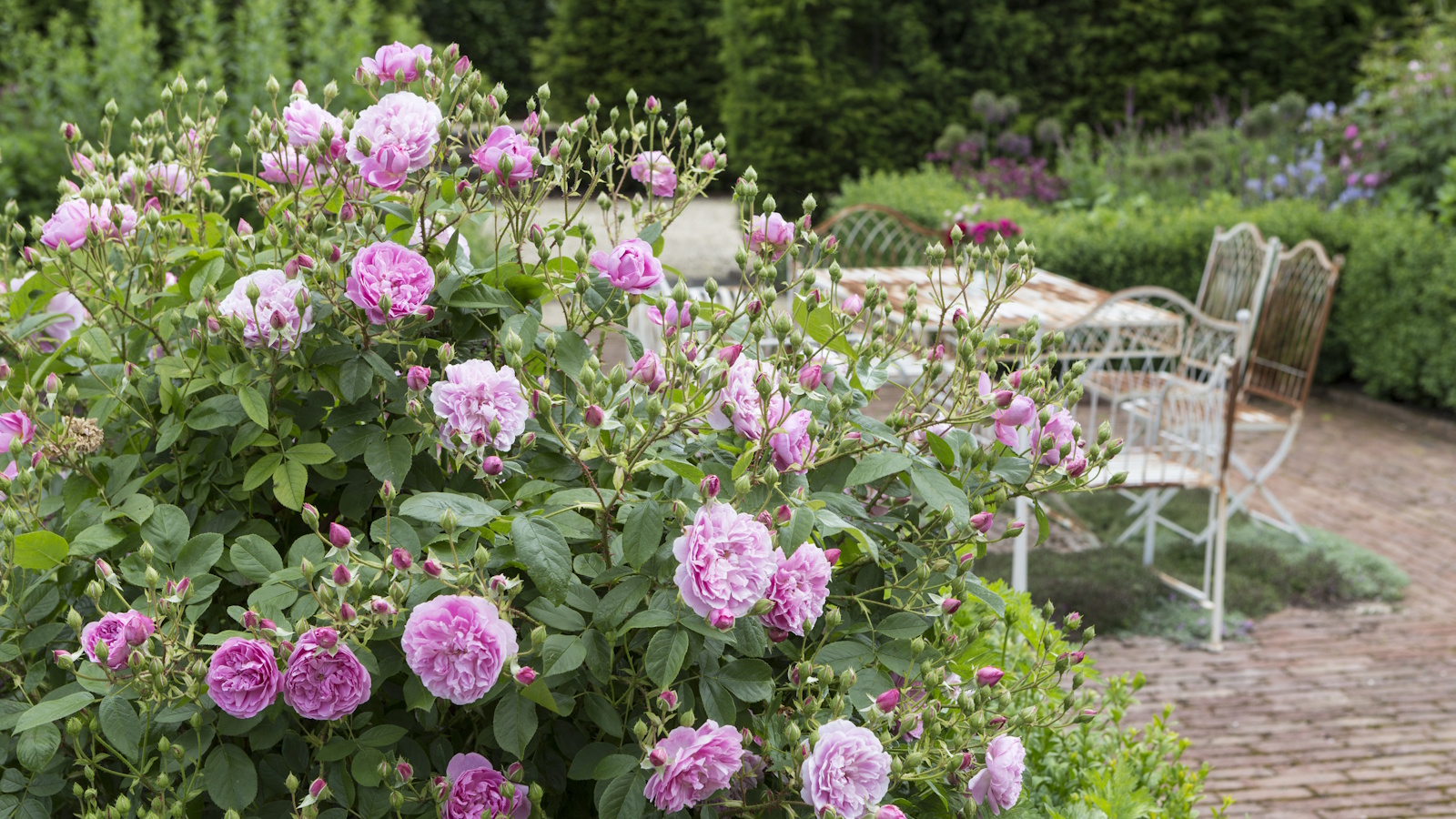 How to weed a garden quickly – professional gardeners reveal the five-minute weeding jobs to do now and get your yard summer-ready
How to weed a garden quickly – professional gardeners reveal the five-minute weeding jobs to do now and get your yard summer-readyShort on time? These time-efficient tasks will keep on top of problem plants
By Thomas Rutter
-
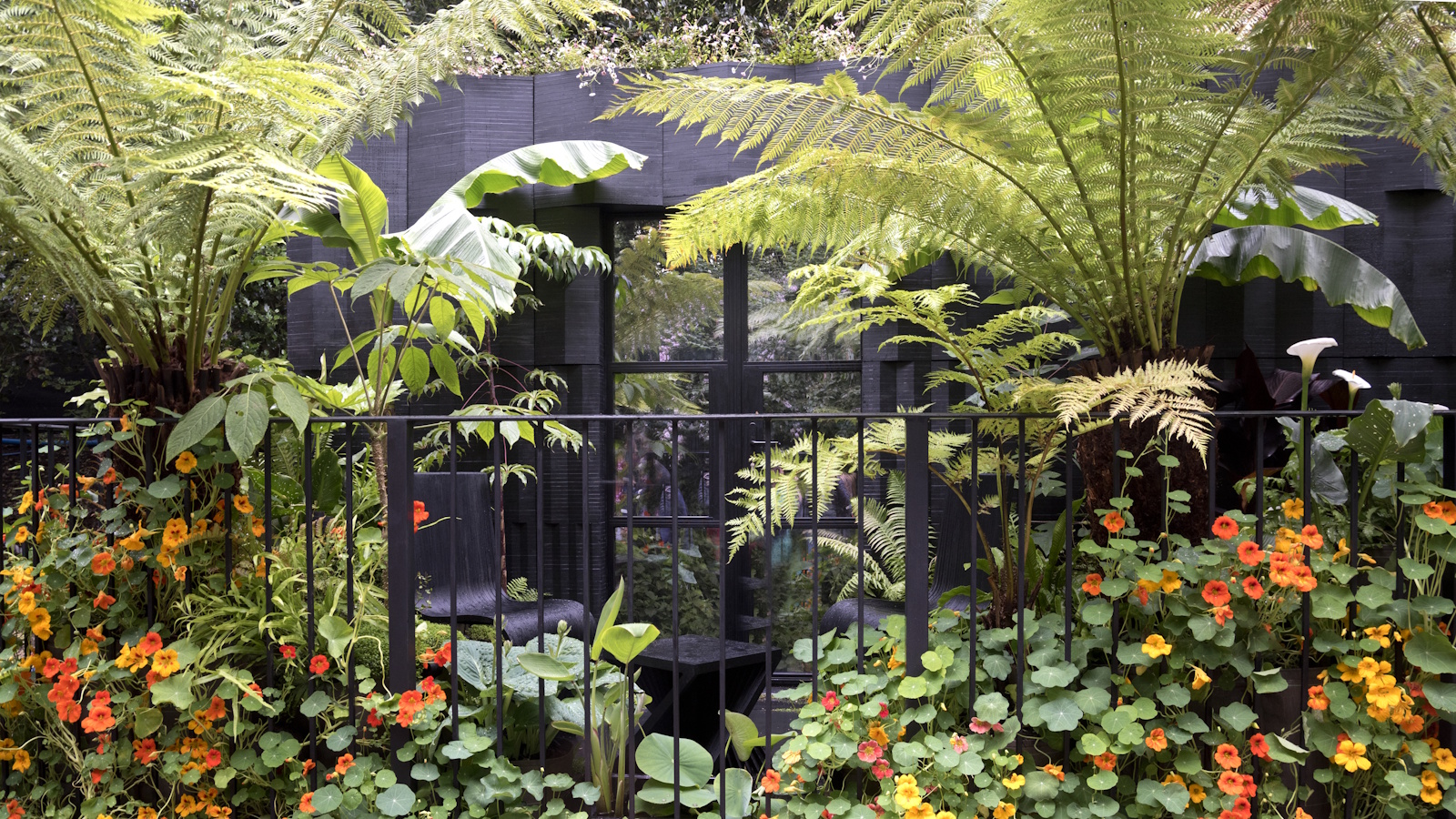 Small yard but want to grow your own crops? This wooden cold frame is 40% off at Wayfair – and it's perfect for tiny patios and apartments
Small yard but want to grow your own crops? This wooden cold frame is 40% off at Wayfair – and it's perfect for tiny patios and apartmentsCold frames are a sensible investment for any gardeners struggling for space on balconies, backyards or patios
By Thomas Rutter
-
 7 native perennials to plant in April – for glorious flowering displays to attract bees, butterflies, and hummingbirds
7 native perennials to plant in April – for glorious flowering displays to attract bees, butterflies, and hummingbirdsDiscover some of the best perennials to plant in April to make your garden a hotspot for wildlife
By Drew Swainston
-
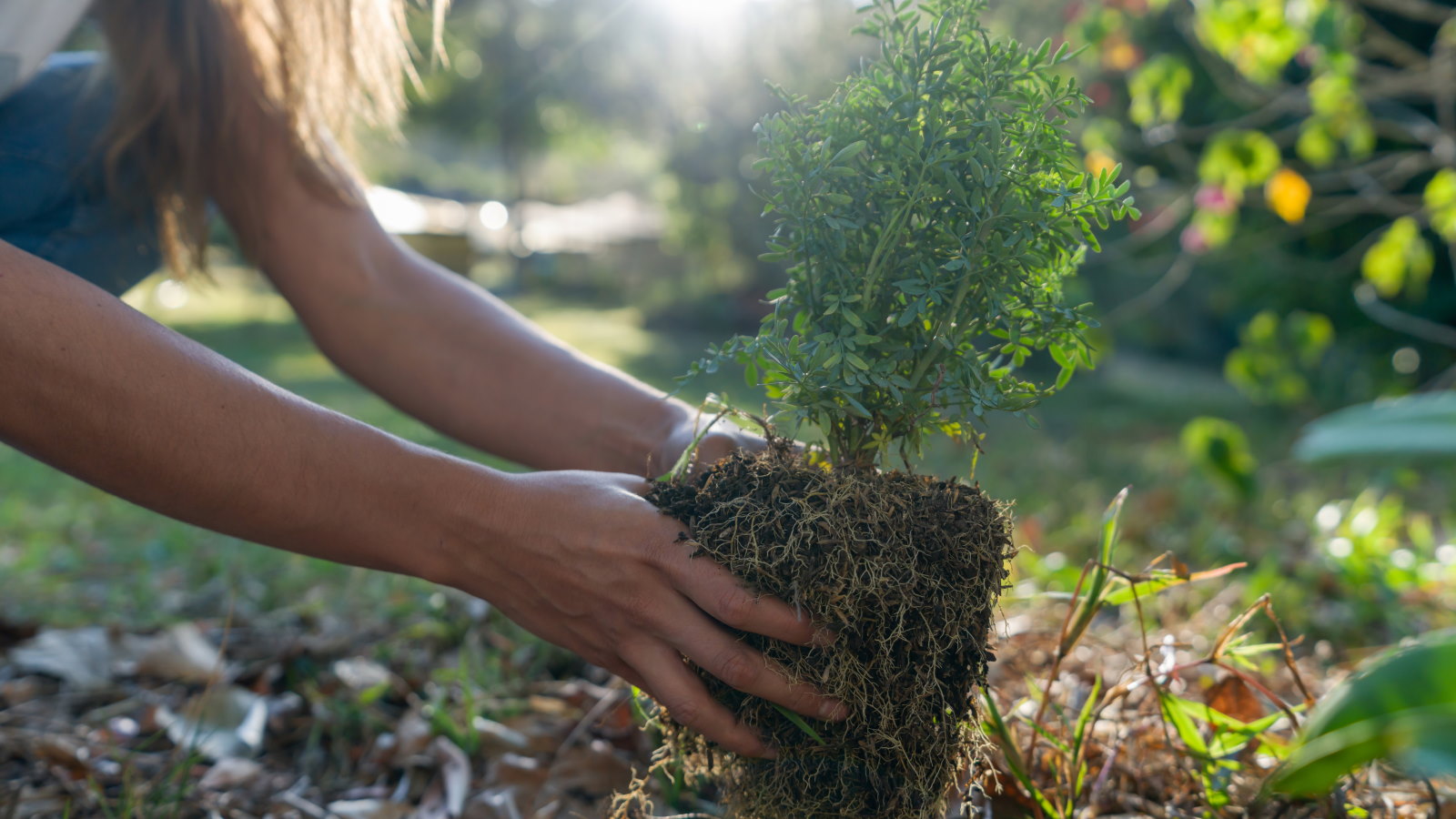 7 shrubs to plant in April to transform beds and borders – including native plants and bushes suitable for dry or wet spots
7 shrubs to plant in April to transform beds and borders – including native plants and bushes suitable for dry or wet spotsThese shrubs can bring flowers, texture, and fragrance, as well as attracting beneficial insects and birds
By Drew Swainston
-
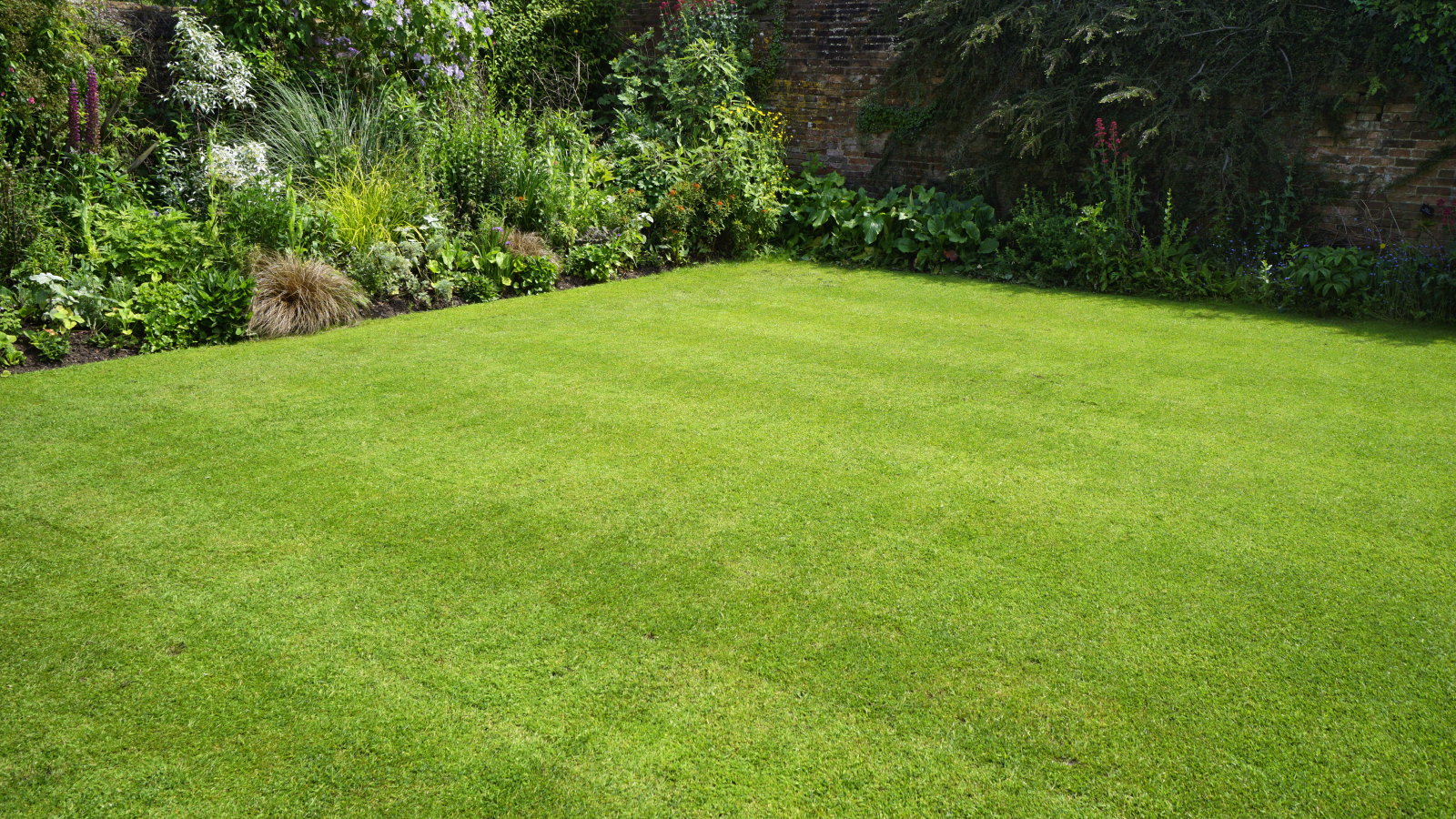 I'm a lawn care expert, and always do these 7 jobs in April to ensure thick, green grass all summer long
I'm a lawn care expert, and always do these 7 jobs in April to ensure thick, green grass all summer longTransform your lawn with these simple yet highly effective April lawn care tasks
By Drew Swainston
